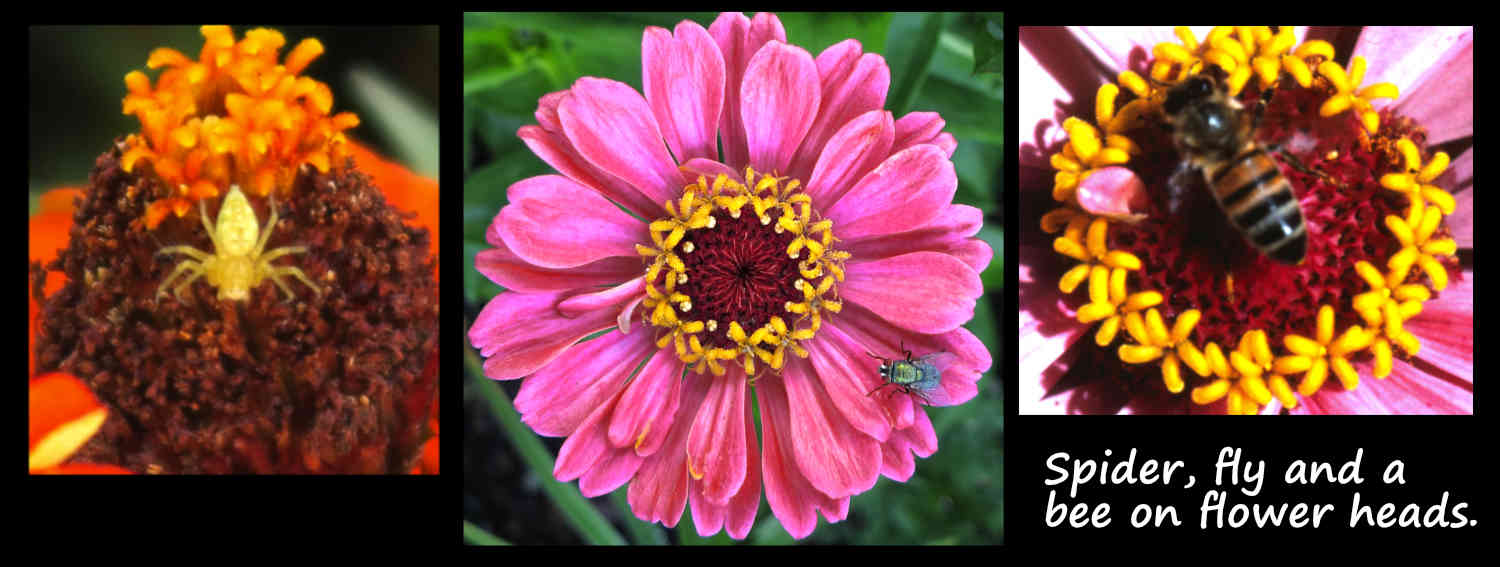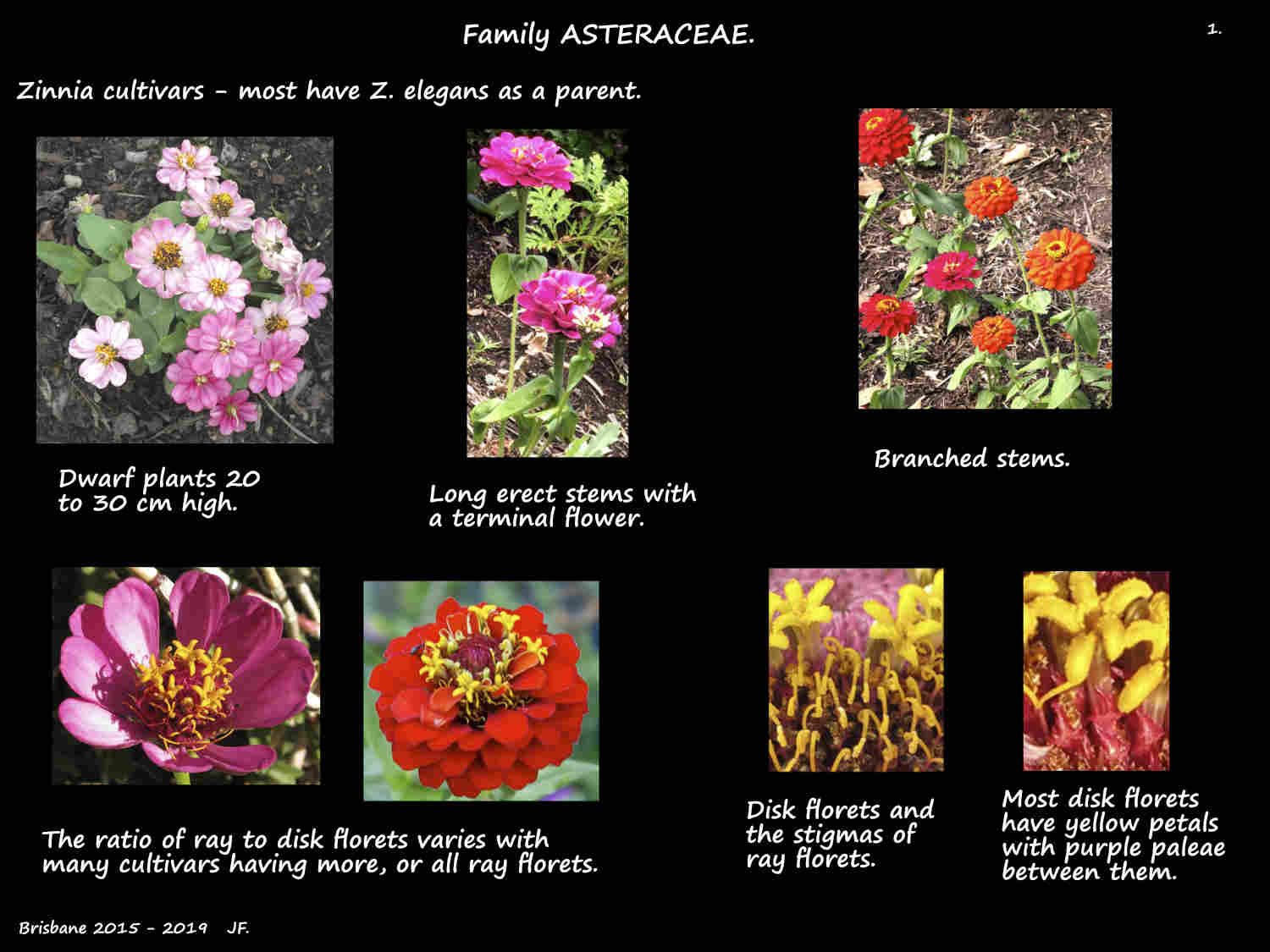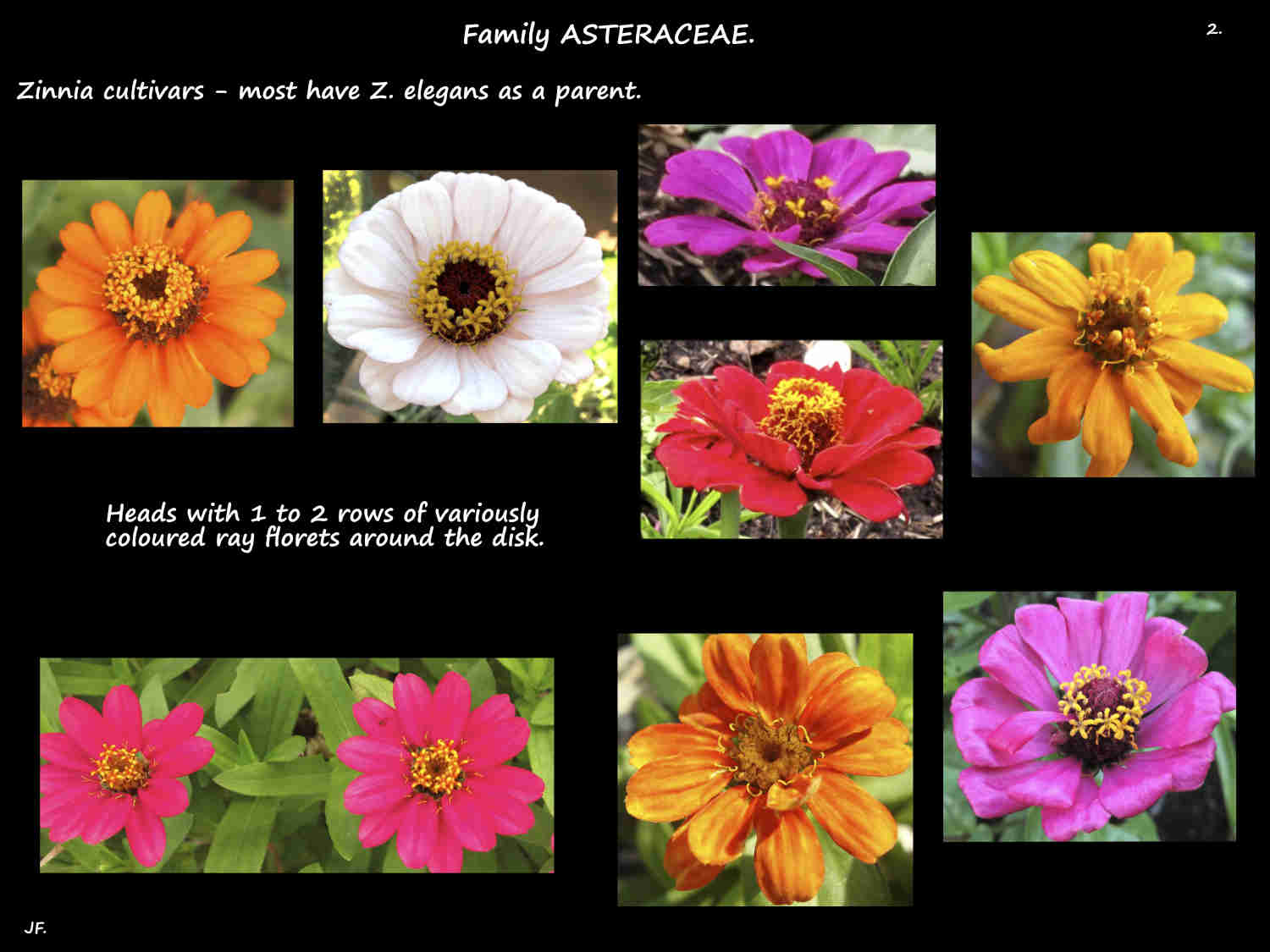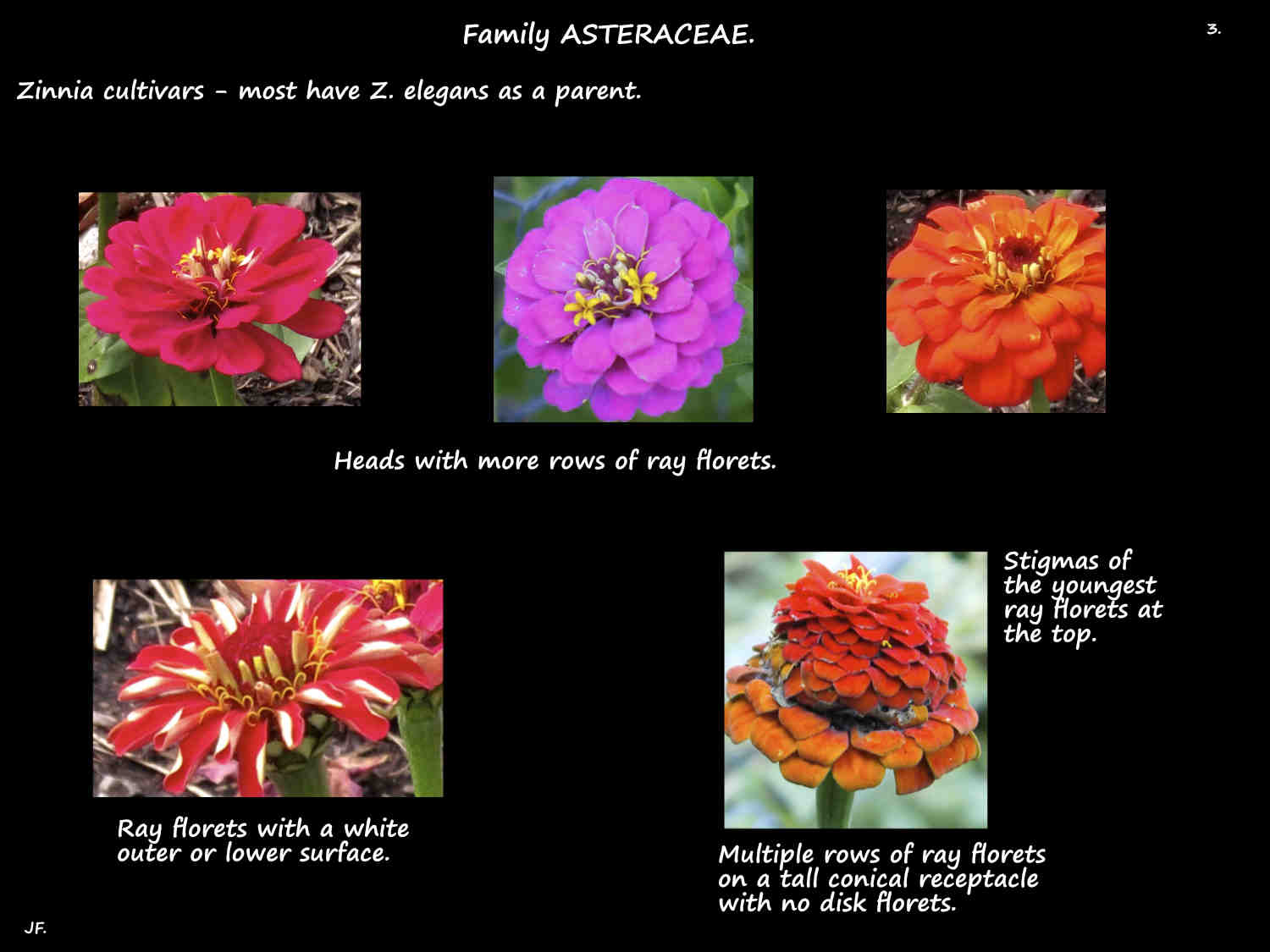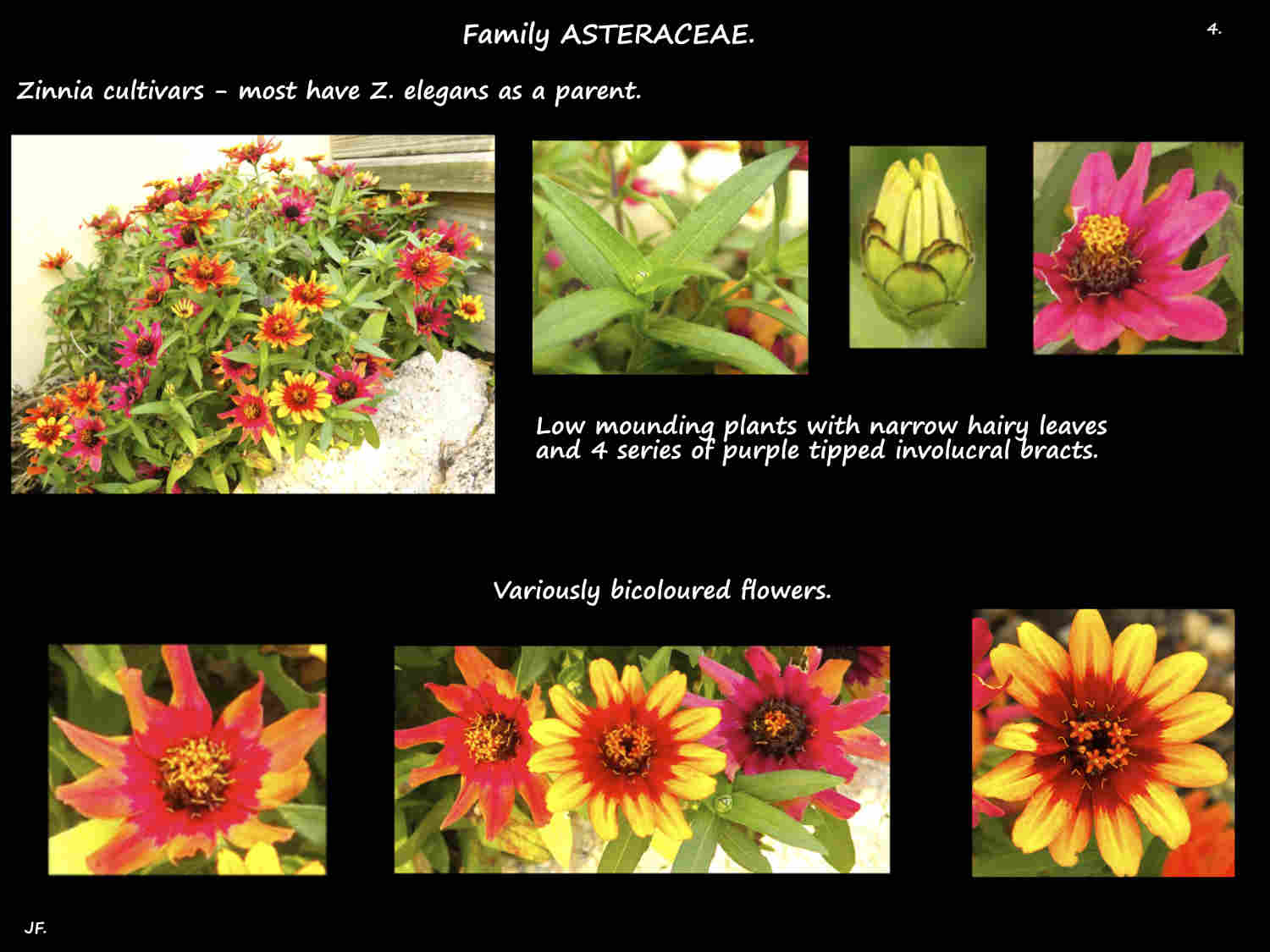Zinnia elegans.
Now regarded as a species Zinnia elegans are hybrids hundreds of years old with 3 native Mexican species as parents.
Instead of the basic 1 set of chromosomes (n) they have the combined chromosomes of both or all parents (allopolyploid).
This results in plants with 3 or more sets of chromosomes (3n, 4n or more).
Zinnia elegans is naturalised in Australia and species plants can be seen in cultivation however most are later hybrids
and cultivars of Z. elegans (red rays), Z. augustifolia (orange), Z. haageana (yellow to red-brown) and
Z. peruviana (pink).
Common or Garden zinnias are erect annual herbs up to 1 m high.
They may be sparsely branched above the base.
The hairs on the stems can be erect or lie flat along the surface.
Horticulturally dwarf plants are from 15 to 45 cm high, medium up to 60 cm and tall to 1 m.
The opposite ovate or lance-shaped leaves, with no petiole are up to 12 cm long.
The base can be flat or wedge-shaped and the surface feels slightly rough.
The solitary terminal hemispherical flower heads are on a peduncle up to 8 or 9 cm long.
Heads (capitula) are around 2 to 3 cm across.
The involucre at the base has 3 or 4 series of free, overlapping bracts or phyllaries.
Up to 1 cm long they have a rounded and often darker coloured tip.
The receptacle holding the florets has scales or paleae (single palea) up to 1.5 cm long.
The red to purple paleae have a fringed tip.
The inferior ovary has 1 locule with 1 ovule and a branched style.
The usually red ray florets, 1 to 3.5 cm long have a narrow obovate or spoon-shaped ligule.
They are fertile females with an inferior ovary with one ovule.
The bisexual yellow disk florets have a corolla tube around 8 mm long and 5 lobes 1 to 2 mm long.
The filaments of the 5 stamens are free and the fused anthers form a tube around the style.
The anthers have a sterile apical appendage and the ovary is similar to that of the ray florets.
Both ray and disk florets produce a single cypsela (not achene) 8 to 9 mm long.
**********************
There are hundreds of cultivars including dwarf mounding plants to some nearly 2 m high.
Heads, up to 15 cm across can be single, semi-double or doubles.
Some have all the disk florets replaced by rays.
Heads are often described as daisy or dahlia-like, or like pompoms or buttons.
Cultivar colours include red, white, pink, mauve, purple, greenish, yellow, orange, burgundy, cream, salmon and bronze.
Some are bicoloured, have stripes or are speckled.
J.F.
